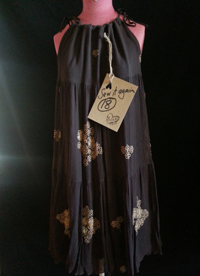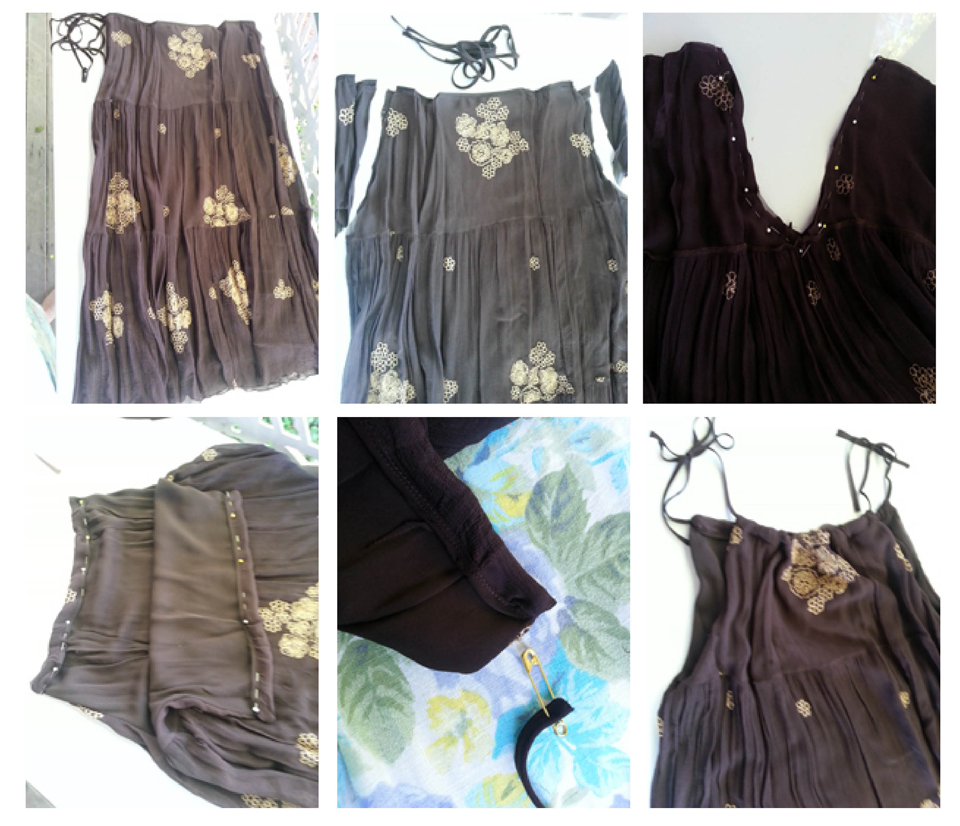 I love recreating cast-offs into something fresh, as I did by turning this beautiful but unworn long silk skirt from an op shop into a comfy and cool shift dress.
I love recreating cast-offs into something fresh, as I did by turning this beautiful but unworn long silk skirt from an op shop into a comfy and cool shift dress.
For everyone, clothing is essential. As well-known Australian designer and champion of natural fibres Liz Davenport said in Management Today September 2013, ‘you can get to an event without a car and without breakfast … but not without clothes’.
Clothing choices impact on our well-being, self-esteem and self-image, but there is a bigger picture to consider as we become mindful about where clothes come from and their true cost.
In Sustainable Fashion and Textiles, Kate Fletcher has written a definitive text on this subject in which she says the reuse of textile products ‘as is’ brings significant environmental savings. The energy used to collect, sort and resell second-hand garments is between 10 and 20 times less than that needed to make a new item.
It is interesting that according to Kate, very little of the second-hand clothing collected in the United Kingdom is reused there, most of it is shipped abroad to be sold on a global commodities market before being resold to local traders in Eastern Europe and Africa – where it can undermine indigenous textile industries and become a waste disposal problem.
Repairing and reconditioning garments also saves resources compared with manufacturing new items, although it requires labour and materials. In earlier times the incentive to repair was economic, with techniques such as turning over worn collars and cuffs, patching trousers and shirts, darning holes in socks being accepted practice.
Kate says: “Yet within two generations, the financial incentive to repair has largely disappeared, mainly because the price of new garments and textiles has fallen dramatically relative to the cost of labour. Repairing garments at home – if it takes place at all – is now motivated less by economics and more by ethical factors or lifestyle choices like down-shifting and voluntary simplicity.”
That’s me. I’m undertaking this 365-day project as a leadership initiative to demonstrate a style of recycled dressing that is sustainable, unique and natural.
The sense of satisfaction, well-being and mastery that flows from the rediscovery of traditional home-sewing skills is significant – and is magnified when aligned with this global consumption picture that requires us all to be more conscious about the consequences of our clothing choices.
To adapt this discarded silk skirt, I removed the ties and then trimmed each side (one had a zip which I salvaged for another day) to become armholes. This skirt was lined, so I turned the skirt inside out and sewed to neaten. I then folded down what remained of the old waistband and sewed it in place to become a casing through which I threaded the ties to become shoulder straps. 